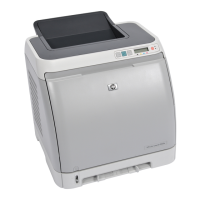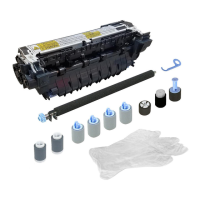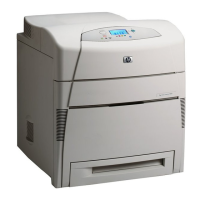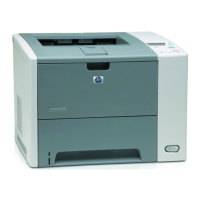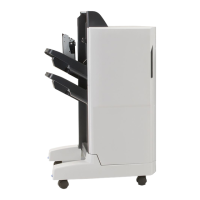erase any residual charges from any previous image. A negative DC bias is applied by the charging
roller to create a uniform negative potential on the drum surface.
Figure 1-11 1. Primary charge (conditioning)
Primary charging bias
Photosensitive drum
Primary charging roller
2. Laser-beam exposure (writing)
Two laser diodes project laser beams onto a rotating scanning mirror. As the mirror rotates, the beams
reflect off of the mirror, first through a set of focusing lenses, then off a mirror, and finally through a slot
in the top of the toner cartridge, and onto the photosensitive drum. The twin beams sweep the drum
from left to right, discharging the negative potential wherever the beams strike the surface. This creates
a latent electrostatic image, which later is developed into a visible image.
Figure 1-12 2. Laser-beam exposure (writing)
Laser beam
Photosensitive drum
3. Developing
At this stage of the process, the latent electrostatic image is present on the drum. The toner particles
obtain a negative surface charge by rubbing against the developing cylinder, which is connected to a
ENWW
Image-formation system
23

